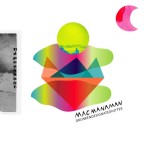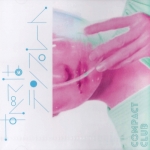My November column for The Japan Times was one of the occasional retrospective pieces I do, looking back at part of rock or pop history. This time I wrote about Aya Matsuura, who might lay claim to being the last great solo idol before the age of the group (and megagroup) took hold. It’s a thoroughly self-indulgent choice of topic, but I have no shame.
I don’t really talk about her music in the article because the main focus was on her as a star or a pop cultural artefact, but we can perhaps say that she was given access to the cream of Tsunku’s songwriting crop and tracks like Momoiro Kataomoi and Yeah! Meccha Holiday would be standout songs in any J-Pop singer’s canon. She had some fine tunes.
Her star persona is what interests me most though. When I was first discovering J-Pop after arriving in Japan in the early 2000s, Matsuura weirded me out. She was drop-dead gorgeous and through the mediating factor of the screen flirted outrageously with the viewer, but she remained utterly inaccessible — she was like some sort of perfect pop cyborg. At the time, that seemed deeply manipulative, and of course it was in a way, but compared to the way idols nowadays push their physical accessibility so hard, the screen for Matsuura was as much a shield as a medium, openly keeping an arm’s length between artist and audience. The same barrier exists with idols now, but much greater lengths are taken to conceal it and promote the illusion of intimacy, so Matsuura feels more honest. This also made her more like how I feel a pop star should be, and that distance, that air of otherness that she exuded, is key to her appeal (yes, I still have a massive crush on her!)
The point I make in the column about the almost monomaniacal focus on her alone in the videos was first raised by my flatmate at the time (the Emmy award-winning comedy writer Josiah Madigan, namedropping fans) who wondered if it represented in some way the sort of intense self-focus of the kind of teenage girls who we assumed were Matsuura’s main audience. I’m actually not really sure who her main audience was — she wasn’t really an otaku idol, but she wasn’t really a female style icon either — but that may have been part of it. Part of it may also have been a conscious counterpoint to her main contemporaries within the Hello! Project, the mass idol group Morning Musume. In any case, it creates a sometimes surreal, almost Freudian internal universe in which the dramas of her faintly comedic (ironic even?) songs play out.
In its simplest sense, we can see it in the miniature angel and devil Matsuuras in the video for debut single Dokki Doki! Love Mail who battle over the conscience of the giant-sized singer as she towers over the city, beamed from giant screens and dances over the buildings, or the fantasy of the homework robot double the video also plays with. Other videos take it way further though.
Tropical Koishiteru I mention in the article, and it features six different Matsuuras, competing against each other at tennis, officiating over the match, serving as ball girl, singing at the game and watching the match on TV. She competes against herself, judges the contest and observes from behind a screen. It’s a joke, but it’s a joke that serves to fragment her identity and deny easy access to the “real” her. If we take it as a narrative aimed at teenage girls, however, the fragmented identity it displays could be taken as a humorous reflection of their own unformed and confused identities and thus more “real” for its embracing of unreality — the screen not only as medium transmitting the message, and protection keeping audience and star apart, but also as mirror reflecting the fans’ own internal dilemmas back at them.
You can see this too in the video for 100kai no Kiss, where one Matsuura repeatedly undermines another’s attempts to contact a boy she likes, stopping time and rearranging her world just before the point of contact. In one sense this is a simple metaphor for the struggle between shyness and desire, but there is something in the “evil” Matsuura’s glance at the camera as she turns away to leave that suggests she has her own designs on the boy, raising the possibility that this more confident and powerful version of her has a life independent of the “real” Matsuura — rather like the two Golyadkins of Dostoevsky’s The Double, if you want to put a literary gloss on it. Again, this is at heart just a joke, but it’s a joke that fragments Matsuura’s identity. Where in Tropical Koishiteru, the “real” Matsuura is watching on TV as the fragments of herself compete behind the screen (and she cheers on her “good” self), here the bad girl Matsuura is a powerful independent being.
In Ne~e?, the whole internal struggle is flipped outwards and the question of who she should be becomes one she is asking the boy she likes (and by extension the fans). “Who do you want me to be?” “Which me would you prefer?” This is where you might get to a closer sense of the nature of Matsuura’s “screen” and an answer to the disconnect between her reflection of the “real” and her embracing of artifice. What it really depends on is whether the gaze that we cast upon her screen is male or female. To the male gaze she gives nothing of herself, only an endless series of hall-of-mirrors reflections featuring numerous versions of Aya Matsuura but bringing you no closer to the real thing, but to the (teenage) female gaze she gives a reflection of their own struggle to form a coherent identity in the face of competing internal and external pressures and demands. In Ne~e?, Matsuura confronts this disconnect directly: “Yeah, I am many things, because it is you who demands that I be so.”












